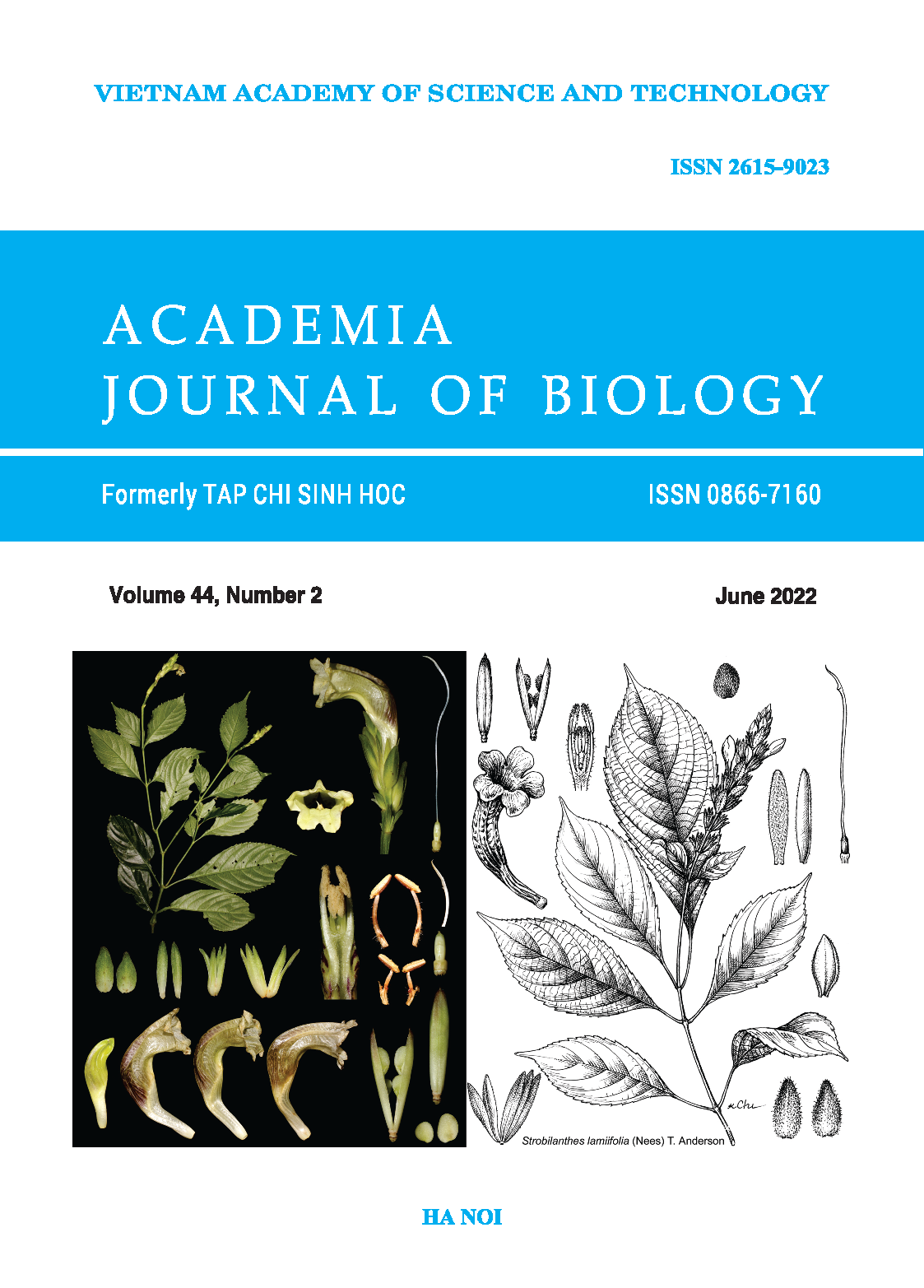Effects of augmentation with \(\textit{Bacillus}\) sp. DT1 on carbonfuran degradation and bacterial community in soil
Authors
DOI: https://doi.org/10.15625/2615-9023/16668Keywords:
Carbofuran, Bacillus sp. DT1, biodegradation, augmentationReferences
Ambrosoli R., Nègre M., Gennari M., 1996. Indications of the occurrence of enhanced biodegradation of carbofuran in some Italian soils. Soil Biol Biochem, 28(12): 1749–1752.
Bano N., Musarrat J., 2004. Characterization of a novel carbofuran degrading Pseudomonas sp. with collateral biocontrol and plant growth promoting potential. FEMS Microbiol Lett, 231: 13–17.
Castro-Gutiérrez V., Masís-Mora M., Diez M. C., Tortella G. R., Rodríguez-Rodríguez C. E., 2017. Aging of biomixtures: Effects on carbofuran removal and microbial community structure. Chemosphere, 168: 418–425.
Colovic M. B., Krstic D. Z., Lazarevic-Pasti T. D., Bondzic A. M., Vasic V. M., 2013. Acetylcholinesterase inhibitors: pharmacology and toxicology. Current Neuropharmacology, 11(3): 315–335.
Das A. C., Chakravarty A., Sen G., Sukul P., Mukherjee D. A., 2005. Comparative study on the dissipation and microbial metabolism of organophosphate and carbamate insecticides in orchaqualf and fluvaquent soils of West Bengal. Chemosphere, 58(5): 579–584.
Duc H. D., 2022. Enhancement of carbofuran degradation by immobilized Bacillus sp. strain DT1. Environmental Engineering Research, 27(4): 210158–210150.
Farahani G. H. N., Sahid I. B., Zakaria Z., Kuntom A., Omar D., 2008. Study on the downward movement of carbofuran in two Malaysian soils. Bulletin of Environmental Contamination and Toxicology, 81(3): 294–298.
Gupta R. C., 1994. Carbofuran toxicity. Journal of Toxicology and Environmental Health, Part A, 43: 383–418.
Gupta J., Rathour R., Singh R., Thakur I. S., 2019. Production and characterization of extracellular polymeric substances (EPS) generated by a carbofuran degrading strain Cupriavidus sp. ISTL7. Bioresour Technol, 282: 417–424.
Ingham E. R., Coleman D. C., 1984. Effects of streptomycin, cycloheximide, fungizone, captan, carbofuran, cygon, and PCNB on soil microorganisms. Microbial Ecology, 10(4): 345–358.
Lewis K. A., Tzilivakis J., Warner D., Green A., 2016. An international database for pesticide risk assessments and management. Human and Ecological Risk Assessment, 22(4): 1050–1064.
Nguyen T. P., Helbling D. E., Bers K., Fida T. T., Wattiez R., Kohler H. P., Springael D., De Mot R., 2014. Genetic and metabolic analysis of the carbofuran catabolic pathway in Novosphingobium sp. KN65.2. Appl Microbiol Biotechnol, 98: 8235–8252.
Oanh N. T., Duc H. D., 2021. Anaerobic degradation of propanil in soil and sediment using mixed bacterial culture. Current Microbiology, 78(4): 1499–1508.
Otieno P. O., Lalah J. O., Virani M., Jondiko I. O., Schramm K. W., 2010. Soil and water contamination with carbofuran residues in agricultural farm lands in Kenya following the application of the technical formulation furadan. Journal of Environmental Science and Health, Part B, 45(2): 137–144.
Plangklang P., Reungsang A., 2009. Bioaugmentation of carbofuran residues in soil using Burkholderia cepacia PCL3 adsorbed on agricultural residues. Int Biodeter Biodegr, 63: 515–522.
Plangklang P., Reungsang A., 2009. Bioaugmentation of carbofuran residues in soil using Burkholderia cepacia PCL3 adsorbed on agricultural residues. Int Biodeter Biodegr, 63: 515–522.
Qu M., Li N., Li H., Yang T., Liu W., Yan Y., Feng X., Zhu D., 2018. Phytoextraction and biodegradation of atrazine by Myriophyllum spicatum and evaluation of bacterial communities involved in atrazine degradation in lake sediment. Chemosphere, 209: 439–448.
Ryeol P.M., Sunwoo L., Tae-Ho H., Byung-Tack, O., Shim J.H., Kim I.S., 2006. A New intermediate in the degradation of carbofuran by Sphingomonas sp. strain SB5. J Microbiol Biotechnol, 16:
–1310.
Trabue S. L., Ogram A. V., Ou L. T., 2001. Dynamics of carbofuran degrading microbial communities in soil during three successive annual applications of carbofuran. Soil Biology and Biochemistry, 33(1): 75–81
Zhou X., Shi X., Zhang L., Zhou Y., 2012. Effects of pesticide-contamination on population and activity of bacteria in purple paddy soil. Energy Procedia, 16: 284–289.
Downloads
Metrics
Downloads
PDF Downloaded: 110





